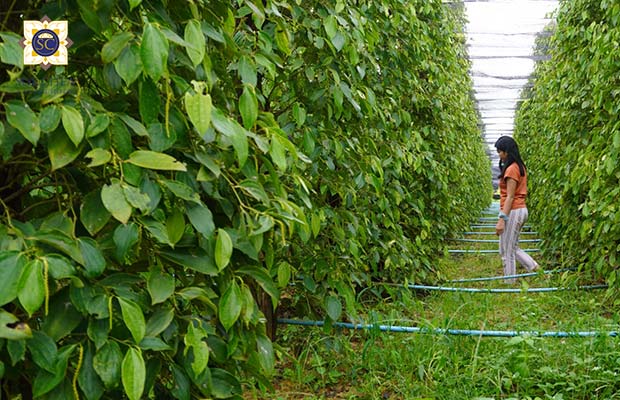Kampot Salt Fields: A Heritage of Cambodia’s Coastline
Nestled along Cambodia’s southern coast, the Kampot Salt Fields are a remarkable landscape where tradition, industry, and natural beauty intersect. Located in Kampot Province, these salt fields have long been an essential part of Cambodia’s agricultural and economic landscape. Known for their vast expanses of reflective salt pans and the labor-intensive techniques still practiced today, Kampot’s salt fields offer insight into rural life, local livelihoods, and Cambodia’s connection to natural resources. More than just a place of production, the salt fields represent a living heritage that blends traditional knowledge with the rhythms of nature.
Historical Background
Salt production in Kampot dates back to the French colonial period in the early 20th century. As the French developed infrastructure in southern Cambodia, they also identified the area’s potential for producing high-quality sea salt due to its flat coastal geography and favorable climate. Since then, salt production has remained a vital part of the local economy. Though industrialization has modernized salt harvesting in many countries, Kampot’s salt workers continue to use traditional, manual techniques, preserving a craft passed down through generations.
The Khmer Rouge era disrupted many aspects of Cambodian agriculture, including salt farming. However, salt production gradually resumed in the 1980s, and today Kampot remains one of Cambodia’s two primary salt-producing provinces, along with neighboring Kep. Despite facing periodic challenges such as floods or changing climate patterns, the salt fields continue to function as a cornerstone of regional identity.
Geographic and Environmental Conditions
Kampot’s geographical features make it ideal for salt farming. The region’s flat coastal plains and access to clean seawater from the Gulf of Thailand create ideal conditions for salt crystallization. During the dry season, from December to May, seawater is pumped into large shallow pans—salt plots—where it is left to evaporate under the hot tropical sun. As the water evaporates, salt crystals form and are collected by hand, often with the help of traditional wooden tools.
The environment plays a central role in this process. The success of the salt harvest depends on extended periods of dry, sunny weather. Even a few days of rain can disrupt the evaporation process and delay production. As a result, salt workers pay close attention to seasonal changes and weather patterns. This deep understanding of natural cycles highlights the symbiotic relationship between the salt producers and their environment.
Economic Importance
Salt from Kampot plays a critical role in Cambodia’s domestic supply. It is used for household cooking, food processing, fish preservation, and exports. On average, Cambodia consumes tens of thousands of tons of salt each year, and Kampot contributes a significant share to that demand.
Local families often own and operate small plots of salt fields. These family-run businesses provide seasonal employment to hundreds of workers in the region. During the harvest season, it is common to see workers—often entire families, including women and children—labouring together under the sun to collect, dry, and bag salt for transportation.
However, the economic benefits are modest. Salt farming is labor-intensive and dependent on weather conditions, and most families earn just enough to cover their daily needs. The industry faces competition from imported salt, which can sometimes be cheaper, leading to price fluctuations that challenge local producers.
Cultural Significance and Way of Life
Beyond its economic value, salt farming is deeply embedded in Kampot’s cultural fabric. The work is both a livelihood and a lifestyle, rooted in patience, cooperation, and harmony with nature. Many families have passed down the trade for generations, fostering a strong sense of pride and identity.
The physical demands of salt farming require resilience and teamwork. Workers begin early in the morning and often continue into the evening. The labor includes pumping seawater, monitoring evaporation, raking salt crystals, transporting heavy loads by cart or basket, and bagging the final product. These tasks are performed with care and efficiency, often without modern machinery, and the result is a salt that is not only functional but also symbolic of hard work and tradition.
Salt also holds symbolic meaning in Khmer culture. It represents purity and is considered essential for life. In some rural traditions, salt is used in rituals and ceremonies to ward off bad luck or evil spirits.
Tourism and the Kampot Experience
In recent years, Kampot has grown as a tourist destination, known for its scenic river, colonial architecture, pepper plantations, and laid-back charm. The salt fields have become a unique point of interest for visitors, offering an authentic glimpse into rural Cambodian life.
Tourists can visit the salt fields, particularly during the dry season, to see the traditional harvesting process firsthand. The expansive white salt pans glistening under the sun provide stunning photographic opportunities, especially during golden hour. Local guides and community-based tourism operators have begun offering educational tours, explaining the process and history behind salt farming while also supporting local livelihoods.
In combination with visits to nearby Kampot Pepper farms, the salt fields contribute to an emerging agro-tourism trend that promotes sustainability, cultural preservation, and economic diversification.
Challenges and Environmental Concerns
Despite their value, Kampot’s salt fields face several challenges. Climate change poses a growing threat, as unpredictable rainfall and rising sea levels disrupt the delicate balance needed for salt production. In recent years, floods have destroyed entire harvests, pushing many small-scale producers into debt.
Additionally, younger generations are increasingly leaving the salt fields for better-paying jobs in cities or abroad. With a lack of labor and limited financial incentives, some salt fields have been abandoned, or the land repurposed for other uses, including real estate or shrimp farming.
Environmental degradation is another concern. The traditional process is eco-friendly, but the encroachment of modern development and the risk of water pollution from nearby industries could affect both the quality and safety of the salt.
Preserving the Future of Kampot Salt
Efforts are now being made to preserve and enhance Kampot’s salt industry. These include initiatives by the Cambodian government, NGOs, and private enterprises to improve infrastructure, provide training, and support market access. Some producers have begun exploring value-added products, such as flavored salts or artisanal packaging, to attract premium markets domestically and internationally.
There is also growing interest in applying for Geographical Indication (GI) status, similar to Kampot Pepper, which would protect the salt’s origin and ensure quality standards. A GI designation would not only safeguard traditional methods but also help establish Kampot Salt as a distinct brand with export potential.
Community engagement, environmental awareness, and sustainable tourism will play a vital role in protecting the salt fields for future generations.







